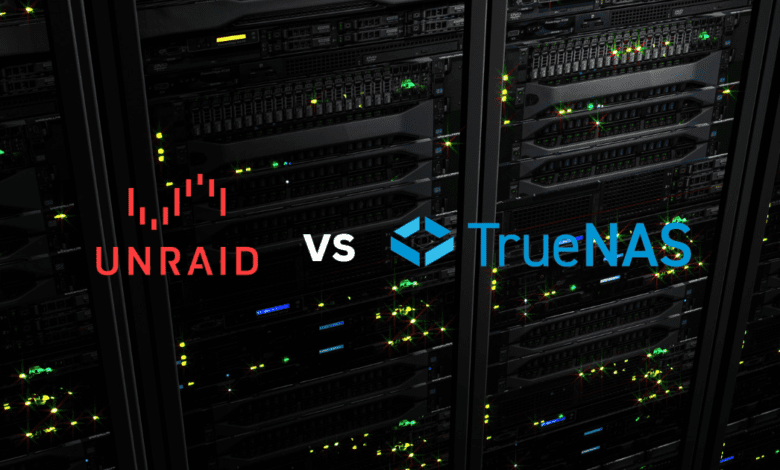
In the complex landscape of NAS (Network Attached Storage) operating systems, a continual debate resides at its core – Unraid vs. TrueNAS. These two mature NAS operating systems bring many features and strengths to the table, promising to cater to diverse storage needs. In this comprehensive exploration, we aim to dissect these systems, comparing them head-to-head to aid you in making an informed choice about the best NAS operating system for your specific needs.
What is Unraid?
Unraid is a proprietary NAS operating system built on Linux, well-regarded for its flexibility and ease of use. The Unraid server operates by using up to a maximum of (30) drives – (28) data and (2) parity drives, protecting your data from drive failures failure.
This approach enables you to add more disks of different sizes to the storage pool as long as they do not exceed the size of the largest (parity) disk. This feature provides Unraid users with significant flexibility when expanding their storage capacity.
One of the key features of the Unraid server is the ability to run Docker containers and virtual machines. Docker containers allow lightweight, isolated environments to run applications, while Unraid’s virtualization option lets you run multiple operating systems on the same computer. For the Unraid community, these features extend the capabilities of their Unraid box beyond just a storage server.
It is built specifically for several different use cases, including the following:
- Minecraft server
- Game Server Hosting
- Password Management
- Backups
- Self-hosted documentation
- Music player
- Server Data monitoring with Prometheus and Grafana
- Wireguard VPN
- NFS Server
- Media Encoding
- Others…
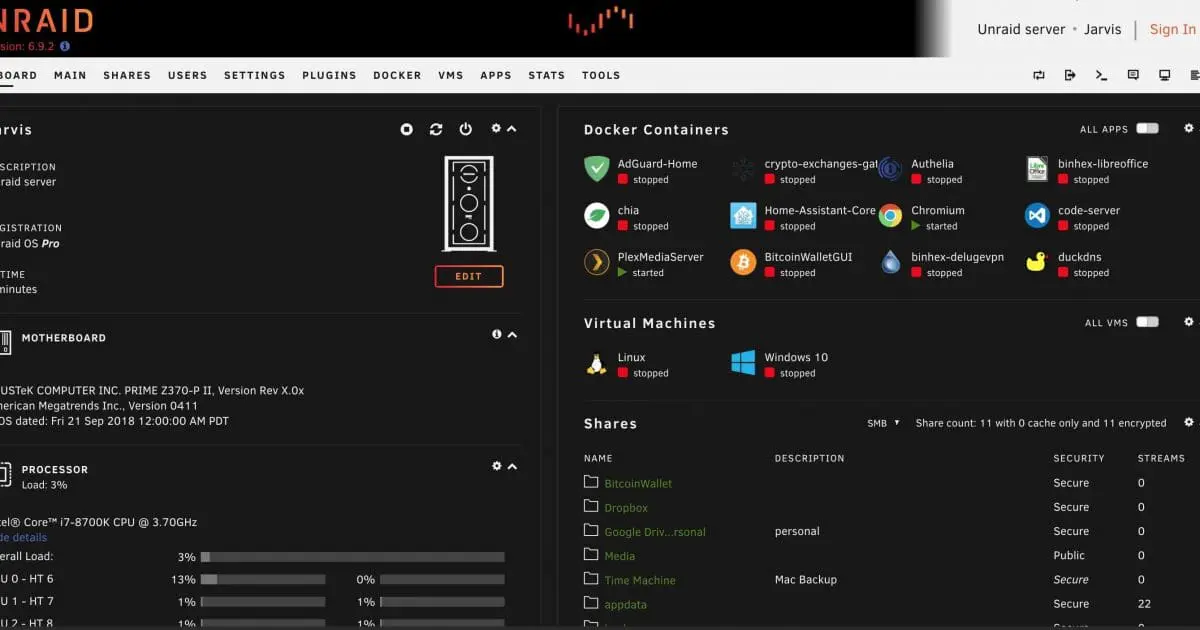
You can learn more from the official Unraid documentation and learn more about the solution here:
What is TrueNAS?
TrueNAS, developed by a private company based in California, is an open-source NAS operating system built upon the robust and reliable OpenZFS file system. The Core version and its newer variant, TrueNAS SCALE, serve individual and enterprise storage management needs.
TrueNAS provides extensive features like RAID technology for data protection, shared folders for collaborative work, and iSCSI services for network-based storage. Unlike Unraid, TrueNAS operates on the principle of RAID arrays, allowing you to utilize multiple drives for redundancy. This approach makes TrueNAS a dependable choice for critical storage applications, albeit at the cost of some storage efficiency.
TrueNAS developers have also baked in a virtualization feature, allowing TrueNAS Scale to run both Docker containers and its own containerization technology alongside virtual machines. Moreover, its default file system, OpenZFS, allows users to create snapshots of their data, adding another layer of protection against data loss.
You can learn more about TrueNAS and download the solution here:
Unraid vs. TrueNAS: A Comparative Analysis
When comparing Unraid vs. TrueNAS, several major differences emerge, each system showcasing its unique strengths and capabilities. In the upcoming sections, we will delve deeper into the nuances of these two NAS operating systems, evaluating their strengths and weaknesses in terms of file systems, storage devices, hardware platforms, community support, and pricing model.
Installation
The first step is installation. TrueNAS makes things easier here since you can download an ISO image for your installation. Unraid runs from a USB device that you build using the Unraid installer, which writes the installation to the USB. It runs in RAM and you are licensed for the USB device.
TrueNAS allows you to download an ISO image, making installing the solution in a VM or elsewhere easy. So, with the installation process, TrueNAS is the easiest to get up and running.
File Systems and Storage Devices
Both Unraid and TrueNAS employ robust file systems. Unraid combines the XFS filesystem and Btrfs, while TrueNAS relies on the OpenZFS file system. Each file system has its pros and cons, which should be considered based on your specific requirements.
In terms of storage devices, Unraid operates on a unique principle, requiring only one disk for parity, with the ability to add more disks of different sizes. Conversely, TrueNAS requires multiple disks of the same type and size to create a RAID array, which provides increased redundancy but demands more careful planning when expanding storage.
Community and Support
The Unraid community is noted for its active forum and user-friendly website. Unraid users often laud the Unraid pros, including its easy-to-use apps page and prompt support services.
TrueNAS, on the other hand, enjoys support from both its developers and a broad, helpful community. Regular updates from the TrueNAS developers and community-driven plugins add to the appeal of this open-source NAS operating system.
Pricing Model
Regarding pricing, Unraid operates on a fair pricing model, with no hidden fees. TrueNAS Core is available for free, while TrueNAS SCALE, targeted at the enterprise market, comes with its own cost structure. You can read more about the TrueNAS Enterprise licensing here: TrueNAS Enterprise | Cost-effective and Reliable Solution for Mission Critical Use.
Exploring the Technical Features: Unraid vs. TrueNAS
When diving deeper into the technical facets of these two NAS operating systems, it becomes evident that Unraid and TrueNAS cater to different user preferences and scenarios.
File systems and features
Unraid’s XFS filesystem is renowned for its impressive performance and stability. Combined with its Btrfs system, Unraid can manage many small files efficiently, ensuring swift data access times. TrueNAS, on the other hand, uses the OpenZFS file system that is highly resilient and feature-rich. With its built-in data integrity checks, OpenZFS can prevent silent data corruption, a feature that’s not available with Unraid’s default file system.
As a note, thanks to Joel in the comments, Unraid as of version 6.12 (currently in RC) will introduce ZFS support. Check out the information on that front here: Unraid | ZFS is Here! Unraid 6.12.0-rc1 Now Available.
Hardware compatibility
In terms of hardware compatibility, both Unraid and TrueNAS support a broad range of hardware platforms. Unraid’s hardware pass-through feature allows the direct allocation of hardware resources to virtual machines, enabling users to run resource-intensive applications. TrueNAS also has similar capabilities, but its hardware compatibility is more enterprise-focused, allowing it to integrate into existing IT infrastructures with Active Directory support seamlessly.
Data loss prevention
Another vital consideration when comparing Unraid vs. TrueNAS is data loss prevention. While both systems have mechanisms to prevent data loss, TrueNAS goes a step further with its robust RAID arrays and snapshot capabilities, offering a higher level of data protection.
Performance Comparison: Unraid and TrueNAS
The performance of these two NAS operating systems is highly dependent on the use-case scenario. If your use-case involves non-critical storage applications and values storage flexibility, Unraid might be a suitable choice. You can easily expand your storage pool by adding more hard drives of different sizes without rebuilding the entire array. This feature is particularly beneficial when you want to add more storage to your Unraid server incrementally.
On the other hand, TrueNAS excels in scenarios requiring high data integrity and enterprise storage management. TrueNAS’s OpenZFS file system offers many advanced features like data deduplication, compression, and end-to-end checksums that help maximize storage efficiency and data integrity. Moreover, the enterprise-oriented TrueNAS SCALE provides additional features like clustering and scale-out storage, making it a formidable contender in the enterprise market.
Unraid vs. TrueNAS: Community Support and Ecosystem
Both Unraid and TrueNAS have thriving communities with active forums and extensive online resources. The Unraid community, with its active forum and user-friendly website, offers a wealth of knowledge and troubleshooting tips. However, a few users have reported occasional instances of an unfriendly community.
In contrast, TrueNAS enjoys the backing of a dedicated community of open-source enthusiasts. Users often find solutions to their problems and new ideas for server configurations on the TrueNAS forum. The developers of TrueNAS also maintain an active presence, regularly releasing updates and new features.
Unraid vs. TrueNAS: Pricing and Value Proposition
Unraid operates on a fair pricing model, with a one-time payment based on the number of disks in your system. There are no hidden fees, making it an attractive option for users on a budget. Unraid’s pricing structure is transparent and available on their official website.
TrueNAS Core, meanwhile, is free to use and open-source, offering an exceptional value proposition for users comfortable with a more hands-on approach. TrueNAS SCALE provides enterprise-level features and support at a competitive business pricing structure.
FAQs
In this section, we’ll address some common queries about Unraid and TrueNAS, providing you with a clearer picture of these two NAS operating systems.
1. Whiach NAS operating system is best for home use?
Both Unraid and TrueNAS can be effectively used for home storage needs. The choice depends on your specific requirements, such as the number of disks you plan to use, your technical expertise, and your data protection needs. Unraid may be better for gaming use cases and TrueNAS for general storage use and virtualization. Although both cross between many use cases.
2. How easy is it to set up Unraid and TrueNAS?
Both Unraid and TrueNAS offer intuitive interfaces for setup. However, Unraid’s setup might be slightly more confined, as it operates from a USB drive and requires users to use this installation method. I like the TrueNAS options that come from a general ISO image that can be deployed.
3. What level of data protection do Unraid and TrueNAS offer?
Unraid uses a single parity drive to protect against one drive failure. TrueNAS, on the other hand, can use RAID technology and ZFS snapshots for data protection, potentially safeguarding data against multiple drive failures.
4. What virtualization options do Unraid and TrueNAS offer?
Both Unraid and TrueNAS support running virtual machines and Docker containers, though their implementation differs. Unraid provides an easier-to-use interface, while TrueNAS SCALE includes an additional, more complex virtualization option.
Wrapping Up
The battle of Unraid vs. TrueNAS is ongoing, with each system bringing unique benefits to the table. Unraid, with its flexibility and user-friendly approach, is great for users seeking a simple and adaptable solution, especially for gaming and media use cases. On the other hand, TrueNAS, with its robust OpenZFS file system and enterprise-level capabilities, offers a dependable solution for more critical storage needs across many fronts
For many, since TrueNAS is free, it wins from the standpoint of cost-effectiveness. It is hard to beat a free storage solution that is as fully featured as TrueNAS and allows you to do so many different things. However, Unraid has some very unique offerings that make it appealing as well, even with the need to purchase a license.


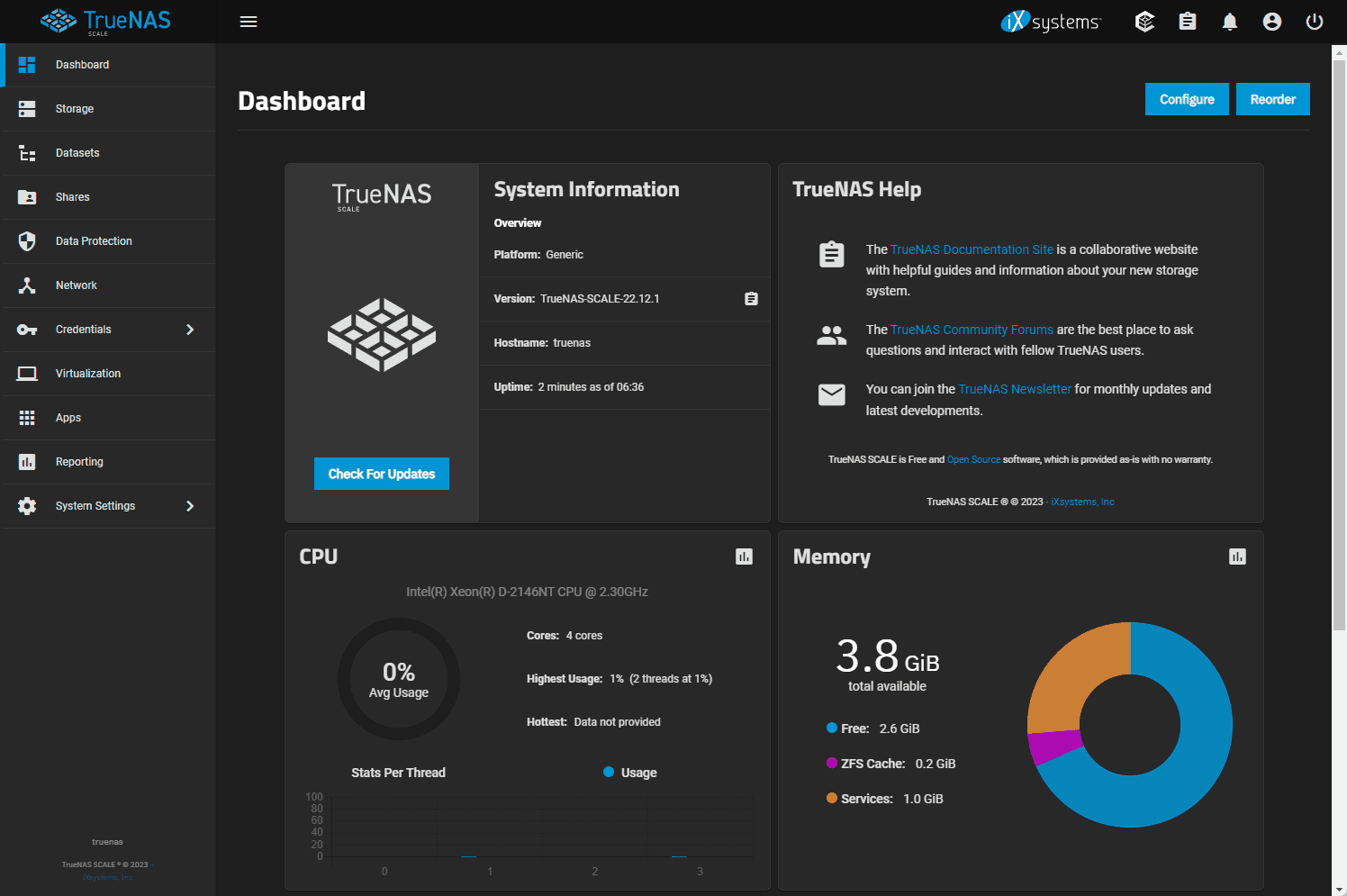
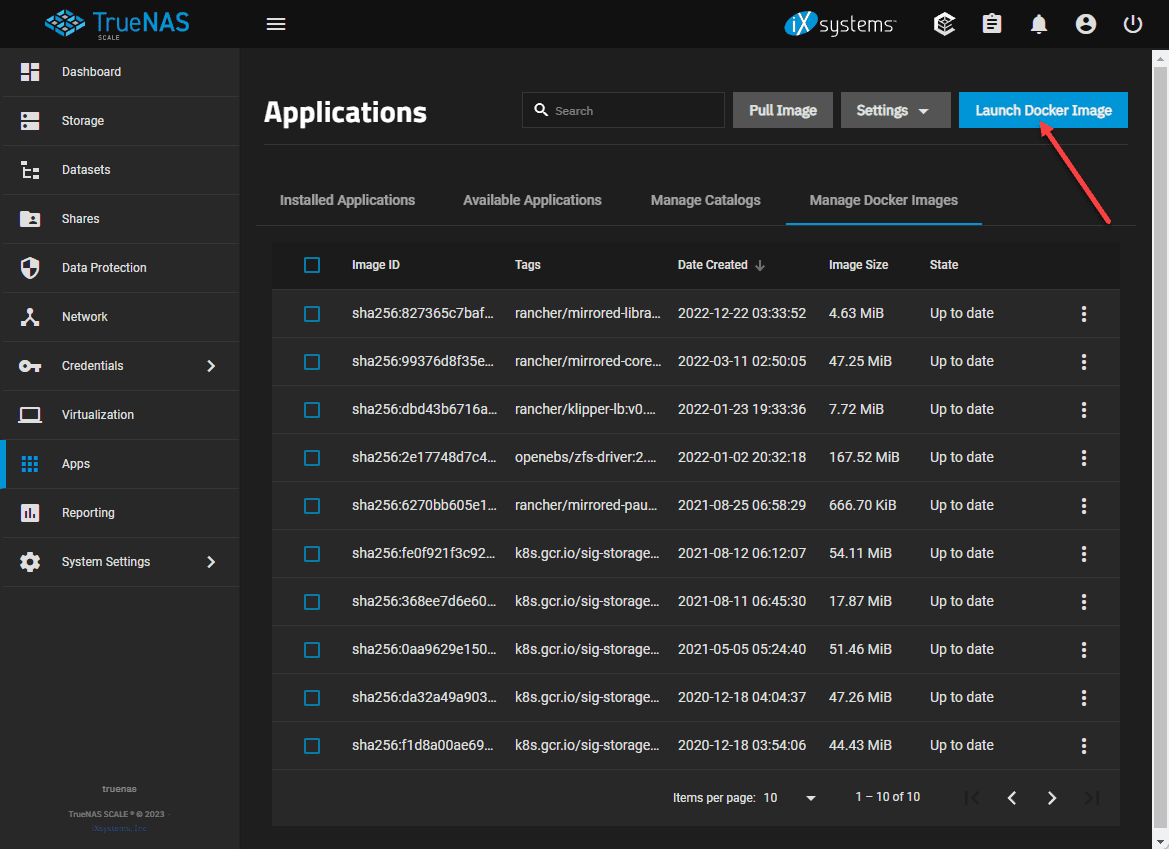
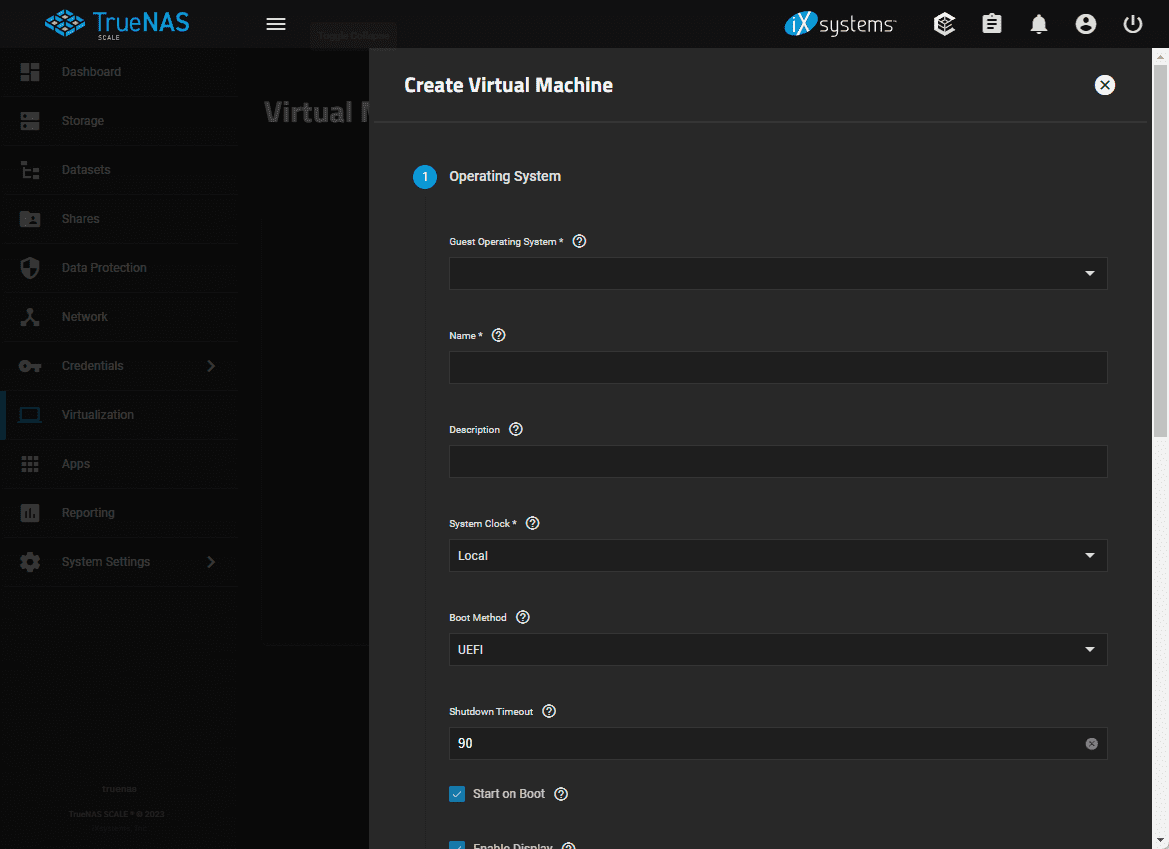
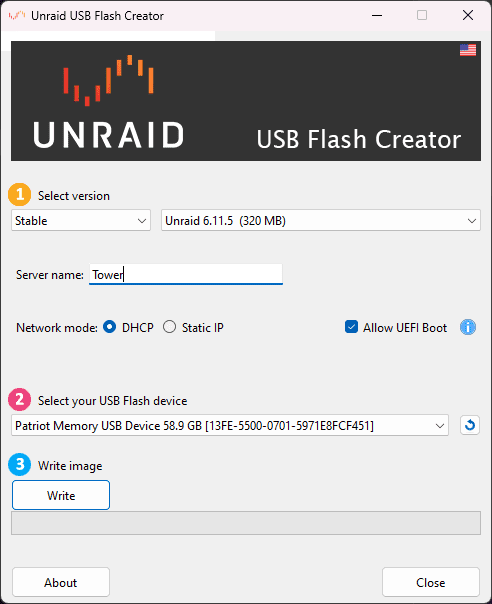
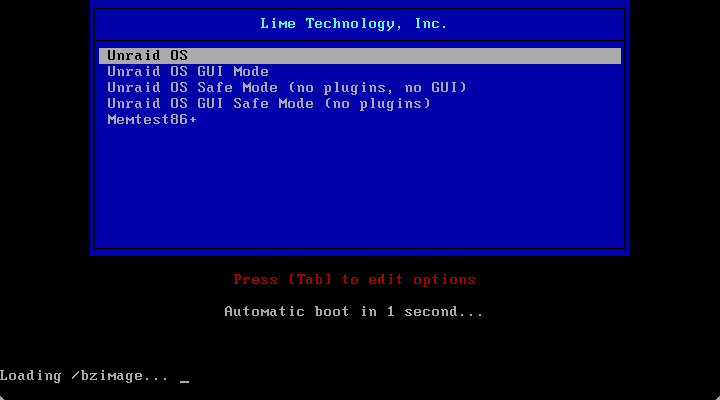
0 Comments